Few years ago, it was believed that Business Intelligence Tools have reached its maturity and there wont be any more innovation in business intelligence spectrum. However, todays BI tools have come a long way and are experiencing continuous innovation in the areas of data visualization tools and cloud based applications. A very basic fundamental of a business intelligence tool is to help organizations make profitable decisions. These decisions are derived from characteristics such as usability, reliability, adaptability, capability and manageability of BI tools.
BI companies that are driving innovation in-order to make their user’s lives simpler are ruling the market and shaping the future of BI whereas, companies clinging on to the old methods are either evolving their products or are going out of the market.
Business improvement is a collaborative effort and should be based on best practices that deliver value. How does a company decide which business intelligence tools fit their requirements and what kind of BI vendors are there in the market? Given below are 7 important points to consider before buying Business Intelligence tools.
- Define business goals.
- Understand business requirements.
- Map users as per role, department and understand their requirements.
- Identify functional requirements and capabilities.
- Identify data source and assess the requirement of getting external data.
- Define business maturity.
- Evaluate and select the right vendor.
Completed Webinar
- Part 1: Visualization –Watch Video.
- Part 2: Data Transformation – Completed.
- Part 3: Performance –Watch Video.
- Part 4: Governance – Watch Video.
- Part 5: Integration and Mesh-ups – Watch Video.
Top vendors offering business intelligence tools
Here are the best companies that offer tools to help businesses understand data and make informed decisions effectively.






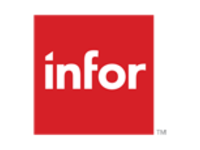
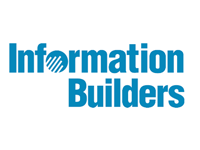

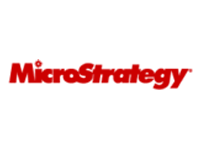


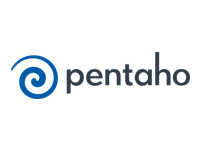
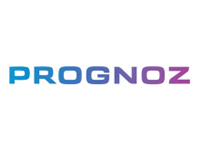


Actuate (Open Text)
Actuate now (open text) is amongst the first companies to provide business intelligence tools. It was founded in 1993 in California. OpenText offers Enterprise Content Management (ECM) and Business Process management (BPM) solutions. Currently Actuate offers iHub, it’s a business intelligence platform that is available as an open source and commercial version. Its also know as BIRT iHub (business intelligence and reporting tool). BIRT iHub connects to various data sources and consists modules for ad-hoc reporting, dashboarding, formatted reporting and analysis. Business users get to use web-based modules that are BIRT Interactive Viewer and BIRT Studio for ad-hoc reporting, BIRT data analyzer for OLAP analysis and BIRT 360 for dashboarding.
Strengths
• Both open source and commercial versions are nicely capable of churning out pixel-perfect reports.
• Business users can easily understand and create ad-hoc reports.
• Business users can use BIRT Analytics for predictive analysis and data mining.
• APIs for product integration and individual development.
Weaknesses
• BIRT Analyzer consists limited OLAP analysis capabilities.
• BIRT Analytics is not completely integrated into the rest of the product offerings.
• It only works on pre-defined analysis and data mining methods. Programming languages for data mining such as R or SAS cannot be integrated.
Arcplan
Arcplan is based out of Germany. Its flagship business intelligence tool is “arcplan Enterprise”. This BI product is a flexible and offers a visual development environment for building individual BI playbooks for dashboards, reporting, planning and analysis. This tool is considered to be the most flexible one on the market currently that enables customization of BI applications using responsive design and those BI apps can be deployed on the web or mobile devices. One of the best features of arcplan is that it provides connectivity with most of the data sources while other vendors have certain limitations in terms of data connectivity. Arcplan is also the most popular third party frontend BI tool for IBM Cognos TM1, SAP BW and Oracle Essbase.
Strengths
- Connects with multiple data sources.
- It enables highly easy to use self-service dashboard creation model by providing various tools for customization.
- Provides flexibility for creating individual BI applications for analysis, reporting or dashboarding.
Weaknesses
- Building a BI application demands technical knowledge thus its not suitable for every one.
- Support for data mining and advanced analysis is limited.
- High flexibility makes handling application complex especially when the project of designing and implementation has just started.
- Limited ad-hoc query and analysis capabilities. Arcplan spotlight supports only multi-dimensional data sources such as Oracle Essbase, Microsoft SQL Server Analysis Services or SAP BW and is not seamlessly integrated with Application Designer.
Birst
Few Siebel Analytics veterans in California founded Birst. It provides cloud-based BI platform for formatted and ad-hoc reporting, analysis and dashboards. BIRST focus on providing pre-built visually appealing business intelligence tools that are targeted towards business users. BIRST supports multiple on-premise and cloud based data sources. Their platform also has integrated modelling capabilities that allows users to access data via live access or pull data from original data sources into cloud platform. Technology savvy business users can use Designer to create pixel perfect reports. They also provide Visualizer that is an interactive module for query, analysis and ad-hoc reporting.
Strengths
- Cloud BI tool for ad-hoc and formatted reporting, analysis and dashboarding.
- Supports data sources such as relational databases, Marketo, Hadoop, salesforce.com and more.
- Uses Tableau for data discovery and supports SAP HANA cloud platform.
Weaknesses
- Technical users required for typical self-service BI tasks in data integration phase such as integrating local data sources, modeling and data blending.
- Limited built-in capabilities for data mining and advanced analysis. Functionality provided only by integrating open source analytics engine, R or Weka integration.
Board
Board was founded in 1994 in Switzerland. Board offers integrated business intelligence tools that encompass front-end and their proprietary multidimensional database. Non-technical business users can easily create dashboarding, planning, analysis and reporting applications. It provides various functionality for planning and simulations use cases and helps in consistent administration, development and utilization. Its very simple to use and highly dynamic. Users can easily build reports as per their specific needs. Board used hybrid in-memory database to store its data that can be used in a ROLAP, HOLAP or MOLAP architecture.
Strengths
- BI tool provides high flexibility for the development of dashboarding, planning, and reporting and advanced analysis applications.
- Business user oriented development where even the most complex BI application can be developed without technical skills.
- Integrated data mining algorithms that is a part of the solution.
- Pre-build dashboards availability to foster self-service dashboarding.
Weaknesses
- Access to proprietary board database by third party front end is limited.
- Limited capabilities for formatted reporting as the vendor emphasises more on on-screen application delivery.
- Inexperienced users face challenge due to high flexibility of complex BI tools.
- No integrated support of languages such as R or SAS.
GoodData
GoodData is based in California and is one of the pioneers in providing Cloud BI solution in the market. It provides a multi-tenant SaaS analytics platform that consists a fast Vertica-based data warehouse infrastructure, a data integration layer that connects to vast data sources and cloud based applications and multiple end-user capabilities such as dashboards, integration of R algorithms and industry specific solutions. GoodData positions itself as ‘Insights as a service” provider in an attempt to differentiate itself from the traditional perception of business intelligence tools that revolves around ad-hoc query, reporting and analysis. The platform can be connected to widely used cloud data applications and other data sources such as Twitter, Workday and Salesforce.com. It has recently added visualization and discovery extensions to its arsenal and they are called Data Explorer and Analytic Designer. Also collaboration features with group sharing and email.
Streangths
- Highly intuitive users experience.
- Easily embedded into various host applications in multiple industries and use cases.
- Highly suitable to analyze social media and other SaaS applications due to its capabilities as a cloud-based platform.
Weaknesses
- It has very less presence in geographies other than Americas.
- It is not a part of a larger community with system integrators and consulting firms positioning itself in new accounts.
IBM
IBM is the world’s largest IT hardware, software and services vendor. In BI arena it offers multiple products. Major business intelligence tools provided by IBM are IBM Cognos BI and TM1, IBM Watson and SPSS portfolio. IBM Cognos BI is a comprehensive suite consisting various business intelligence functionalities such as dashboarding, reporting, ad-hoc reporting and OLAP analysis in web-based and integrated modules. This BI tool is suitable for large data volumes and multiple users. IBM Cognos TM1 is the oldest of the lot and is a high-performance, multidimensional in-memory database for planning and analysis. TM1 is for the users who prepare planning and analysis applications based on in-memory database. Content can be published over the web and uses Excel as its main front end. IBM Watson is targeted towards business users that can use its cloud-based features focused on search-oriented visuals and predictive data analysis. IBM SPSS is made for data scientists who are well acquainted with statistical knowledge, as it’s an advanced analytics and data mining BI tool.
Strengths
- Multiple products under one roof that covers dashboarding, ad-hoc reporting, analysis and planning.
- Extensive capabilities for data mining and advanced analysis, easy to create and deploy business user oriented and individual models capabilities. Driving innovation with IBM Watson.
- IBM Cognos, IBM Workspace Advanced and IBM Cognos TM1 enable options for ad-hoc and OLAP analysis.
- Support available worldwide.
Weaknesses
- Limited integration across the product platforms like IBM Cognos BI, IBM Cognos TM1, IBM SPAA and IBM Watson.
- Multiple products for mobile BI make it complex. Mobile BI products: IBM Cognos Mobile, IBM TM1 Mobile Contributor and IBM Concert Mobile.
Infor
Infor is a New York based company providing ERP, BI, SCM, CRM and several other business software solutions. Infor’s BI tool is an integrated platform consisting dashboards, reporting, analysis, planning and forecast with proprietary multidimensional data storage. This platform contains elements such as Infor BI office Plus an add in fro Excel word and PowerPoint, Infor BI Application Studio for building web based BI applications, Infor BI dashboards for developing dashboards for web and mobile devices and Infor BI OLAP. Infor also provides pre-defined BI applications for multiple industries and as per various departments. This BI tool is called Infor Dynamic Enterprise Performance Management (Infor d/EPM). All the elements uses Infor BI OLAP server that stores data in multiple ranges. In terms of relational database, Infor requires Microsoft SQL server or Oracle. Infor provides additional functions such as advanced analytics, production reporting and data integration via OEM artnerships with Bissantz, IBM Cognos and Cubeware.
Strengths
- Excellent capabilities for ad-hoc analysis and planning unified with Microsoft Excel.
- Pre-built business intelligence tools and performance management applications with Infor d/EPM.
- Mobile BI tools include dashboard creation capabilities.
- Technology savvy business users can build web based BI applications.
- Unified application platform for reporting, analysis, dashboarding, planning and forecasting.
Weaknesses
- No homegrown solutions for advance analysis and data mining.
- No presence in current BI trends such as visual analysis, self-service BI or predictive analytics.
- Limited unification of Infor BI Application Studio and Office Plus.
Information Builders
Information Builders is a New York based company. Its flagship product is WebFOCUS, which was introduced in 1997. They have introduced other Business Intelligence tools like iWay product line that is used alongside WebFOCUS for data quality and integration purposes. Information Builder is praised for its capabilities of handling large data and user volume with very less administration requirements. WebFOCUS can be used to centrally manage and publish all the BI applications to audience within and outside. It is a web-based BI platform that supposts ad-hoc reporting, dashboarding, formatted reporting and analysis. Custom application development center consists decision support and frontend tools. One of the best features of WebFOCUS is its support for Operational BI in which insights are derived from data coming from production systems.
Strengths
- Apparently one of the most scalable and flexible solution on the market. User friendly and supports reporting for large user groups, formatted documents, dashboarding, analysis and ad-hoc reporting.
- Supports wide range of data sources.
- InfoApps for the development of pre-defined applications for business users.
- InfoDiscovery is an easy to use data discovery tool.
- InfoAssist supports ad-hoc reporting and querying.
Weaknesses
- Self-service BI tools and data discovery solution has been released recently and still needs to prove its capabilities.
- Application development environment is highly technical.
Logi Analytics
Logi Analytics is based out of Virginia. Its major focus is to provide solutions that are easily embeddable with the operational systems. Their product line includes the following:
- Logi Info, a BI tool for ad-hoc reporting and self-service analytics.
- Logi Vision is a visual analytics BI tool.
Logi Info being the core product for reporting, analysis and dashboarding, can be integrated with operational systems and applications. Its ideal for developers and end users, developers can have fun building the reports and dashboards whereas business users can interact, consume and somewhat modify the reports. The tool supports development of various web based and mobile applications. Their self-service features allow users to create and share dashboards and reports, create ad-hoc queries, analyze data and build visualization under governed environment. Logi Vision is a visualization BI tool built for non-technical users to create visual reports and share it work groups across the organization. It can connect to multiple data sources and prepares data for analysis.
Strengths
- Creating mobile and web-based applications across multiple operational systems.
- Logi Vision enabling self-service BI and used for ad-hoc reporting and dashboarding.
- Easily embedded across operational systems.
Weaknesses
- Logi Vision at a nascent stage.
- Limited advance level analysis and data mining functions.
MicroStrategy
MicroStrategy is the first company to provide fully integrated BI product that consists dashboards, analysis and formatted reporting. It’s the first company to provide solutions for mobile devices and released PRIME (Parallel Relational In-Memory engine) as a part of its cloud services. The product is made to deliver high performance to large numbers of users and data sets. MicroStrategy has Flash integrated in its system that gives an edge to its products. Visual Insight (VI) is a relatively new data discovery tool integrated with MicroStrategy Web. It provides visual and explorative analyses.
Strengths
- Cloud platform with data integration capabilities.
- Developers have the option of using various statistical functions form the library.
- Single integrated platform for BI dashboards, ad-hoc reporting, analysis, creating BI application.
- Supports large volume of users and data.
Weaknesses
- Licensing cost more than competitors.
- Solution for predefined models only, no solution for data mining and predictive analysis.
- Absence of planning solutions.
Microsoft
Microsoft has multiple solutions under its umbrella. It has its own database management system, servers, collaboration tools, and Dynamic ERP, CRM and business intelligence tools. Its business intelligence capabilities are spread across various tools like SharePoint, Office and SQL Server product lines. These tools are consists formatted reporting dashboards, analysis and ad-hoc reporting. Power BI is a cloud based BI product specifically made for dashboards, ad-hoc reports and analysis. Microsoft Excel is the main component of Power BI and enables various functions such as Power Pivot, Power Query, and Power Map, Power view, uses office 365 for publishing, collaboration and mobile delivery. Microsoft SQL server encompasses multiple tools to support its Power BI. The most important being multidimensional database, reporting services and analysis services. Microsoft SharePoint is a team collaboration and content management tool. It supports Microsoft Vision by providing various functional tools such as enterprise search and collaboration specifically in terms of unstructured data.
Strengths
- Excel is the most popular product that is also used as a self-service BI tool.
- Presence of business partners around the world bolsters the support for the products.
- SQL server is the worlds leading database management system that consists OLAP modeling, relational data storage, integrated data mining and spatial support.
- Multiple products under one roof with capabilities of dashboards, ad-hoc reporting, formatted reporting and analysis.
Weaknesses
- Microsoft lacks central metadata repository thus, BI products can be integrated on data level only.
- Multiple tools with BI capabilities. This is confusing and buyers need to evaluate the products based on use case.
Oracle
Oracle is one of the worlds leading software and hardware vendor. Its business intelligence tools portfolio includes:
- Oracle BI Foundation Suite: Buyers have the option of the stand-alone version or to combine it with Oracle Exalytics system hardware. Database options used by the Foundation suite are Oracle database in-memory, Essbase in-memory database engine or TimesTen in-memory database. It is a common platform for ad-hoc reporting and analysis, dashboards and formatted reporting. Major components of this business intelligence tool are Oracle Business Intelligence Enterprise Edition (OBIEE), Oracle BI Publisher, Oracle Business Intelligence Mobile, Oracle Essbase Analytics link and Oracle Essbase. They introduced Oracle BI Cloud services in 2014 that integrates the functions of data loading and modeling in the foundation suite. Oracle Cloud provides provide Oracle Big Data Discovery that is a visualization and analysis tool used for Hadoop-based data.
- Oracle Endeca Information Discovery: It is used for explorative analysis for structured and unstructured data. Endeca has its own data storage and server. Endeca provide web-based data integration and simple modeling features for business users.
- Oracle Hyperion Planning.
- Oracle Advanced Analytics: Advance analytics is an extension of RDBMS for data mining. It consists of Oracle Data Mining and Oracle R Enterprise.
Strengths
- Availability of a single web-based business intelligence tools portfolio for dashboarding, ad-hoc reporting, analysis and scorecarding.
- Oracle RDBMS platform for advanced analysis and data mining.
- Powerful ROLAP engine that can produce multiple SQL statements to answer user queries.
- Mobile BI applications creator.
Weaknesses
- No seamless integration between Founcation suite and Endeca.
- Separate solution for visual and advance analysis.
Pentaho (Hitachi Data Systems)
Pentaho revolutionized the BI industry by having an open source business model. It is now acquired by Hitachi Data Systems. Pentaho’s business intelligence tool comes with front-end functionalities such as dashboarding, OLAP analysis, data mining and reporting. Business users can create complex reports. It also provides support for Hadoop, Unstructured data sources and NoSQL. Pentaho has its own SaaS offering due to its heavy investment in the Cloud BI arena. Penthao’s strategy is to integrate Big Data and analysis as well as to embed analytics in third-party software solutions. They are focusing on making their BI tools more users friendly with very less IT involvement.
Strengths
- Flexible platform integrated with data and front end tools for reporting, data mining, analysis and dashboarding.
- Open source platform allows continuous improvement in software by large communities.
- Open source Weka provides data mining and predictive analysis.
- Business users can create complex reports.
- Access to Hadoop, NoSQL and other analytical databases.
Weaknesses
- IT skills required for customization of reports and dashboards.
- Absence of collaboration tools hinders sharing of reports amongst business users.
Prognoz
A team of researchers at the Economic Cybernetics Department of the Perm State University and the Institute of Economics of the Ural branch of the Russian Academy of Sciences founded Prognoz. They have offices in Canada, USA, Asia and Western Europe.
Prognos business intelligence platform includes dashboarding, ad-hoc reporting and analysis. This business intelligence tool consists of two environments. One is where the application development takes place and is a technical oriented designer. Second is where spreadsheet oriented grid is used for creating reports. Reports once prepared, can be exported in various formats. Prognos also offers a web-based platform for analysis and ad-hoc reporting. Its visual environment consists of pre-defined statistical methods that are used to create individual statistical models.
Strengths
- Development tools for custom applications.
- BI platform for dashboarding, reporting, analysis and mobile BI.
- Pre-defined forecasting methods and time series analysis.
- GIS-Integration for Geo Visualization.
Weaknesses
- No planning solution.
- Less support for visual and other types of analysis.
- Technical knowledge required for building dashboards and other applications.
Qlik
Qlik is one of the most prominent names in the world of BI. Originally from Sweden, they shifted to USA in 2005. Qlik provides multiple business intelligence tools. Its portfolio consists of Qlik Sense Cloud, Qlik Sense Enterprise, as well as Qlik analytics platform for developers, QlikView, QlikView NPrinting and QlikView Expressor.
QlikView is the first product on the market under “data discovery tools” category. It’s basically a dashboard and analysis solution that uses in-memory technology. Qlik has targeted business users with this solution with a view to help them develop their own dashboards without much IT intervention. Although it addresses challenges faced by business users, trained staff is required for more complex and scalable implementation. QlikView NPrinting is a report generation and distribution application. Reports can be created in multiple formats such as Office and PDFs.
Qlik sense is relatively new product on the market. It falls under the self-service business intelligence tools category that allows quick analysis results. The advantage of this BI tools is that users can spend less time on building applications and it comes with central library for common metadata.
Strengths
- Business user centric platform for dashboarding, reporting, analysis and developing individual applications.
- Excellent charting and formatting features.
- Easy and quick implementation and customization.
- Receptive in-memory processing.
Weakness
- Heavy scripting required for complex implementations and data integration.
- Data consistence issues when multiple models are created.
- Planning capabilities not a part of the product portfolio.
- Limited separation of data from the proprietary structure.
SAP
SAP entered the business intelligence market by acquiring Business Objects in 2007. SAP BusinessObjects consists various business intelligence tools that cater to the requirements of multiple end-users. This platform has multiple products with the capabilities of building custom BI applications that can be published across mobile devices or Web. Below are the products offered by SAP.
- SAP Crystal Reports.
- SAP BusinessObjects Web Intelligence.
- SAP BUsinessObjects Design Studio.
- SAP BusinessObjects Analysis.
- SAP Lumira.
Few products use central Universe semantic layer to access data sources whereas others directly access data sources.
SAP Crystal Reports are for the companies that need highly formatted reports. It is mostly used by technically savvy users from a specific line of business to create and publish reports across a group of report consumers.
SAP BusinessObjects Web Intelligence is an analysis an ad-hoc reporting solution. It is suitable for creating simple dashboards.
SAP BusinessObjects Design Studio is ideal for organizations requiring custom designed dashboards and individual guided BI applications.
SAP BusinessObjects Analysis edition is used for OLAP analysis, also an add in for Microsoft Excel and PowerPoint.
SAP Lumira caters to the requirements of analysts who seek self-service data discovery and visual analysis. It comes either as a full desktop client or server for Web based users. It uses in-memory data storage capability and a cloud version is also available.
SAP acquired KXEN product portfolio and came up with SAP Predictive Analytics. This solution is used for data mining and statistical analysis. It is an extension to SAP Lumira for statistical analysis as well as stand-alone solution for data mining experts.
Strengths
- Comprehensive business intelligence tools consisting analysis, ad-hoc reporting, custom application development and dashboarding.
- Business user centric.
- Platform has integrated publishing and distribution features.
- Excellent predictive analytics and data mining capabilities.
Weaknesses
- Major focus on Lumira and Predictive Analytics products that leads to less innovation and updates for other BI products.
- Product integration is a work in progress.

